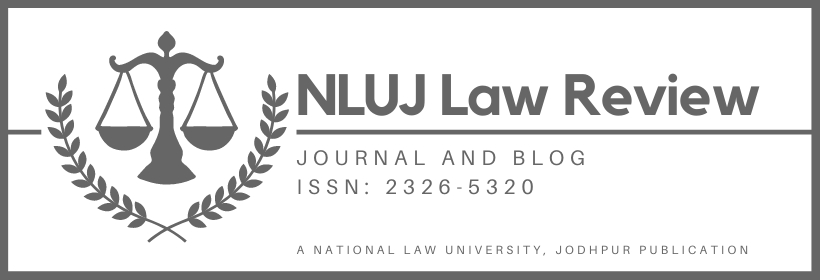The Indian Government’s banana decision of 2 August 2021 continues the convoluted debate of existing judicial bodies’ functioning over appellate tribunals. The Tribunals Reforms Act, 2021 (“Act”) provides for dissolving over nine appellate board/tribunals (the Cinematograph Act, 1952; the Customs Act, 1957; the Geographical Indications of Goods Act, 1999, the Protection of Plant Varieties and Farmers’ Rights Act, 2001 and the Patents Act, 1970) and transferring the functioning of the appellate tribunals to other judicial entities. In the banana decision, the passing of Tribunal Reforms Bill, 2021, which was hastily passed amongst the commotion of the existing debates in the Monsoon Session of the Parliament, is under much criticism of the Hon’ble Supreme Court of India (“SC”). Starting from the position, the appellate tribunals and their functioning in the Constitution of India (“Constitution”) has posited an impact of much significance (as it helps in reducing the existing workload of the Indian courts and further assists in speedy disposal of the cases). However, the Government through the present decision seeks to absolve these appellate tribunals.
The present Act mainly invokes two points of confusion which will be highlighted. First, the tribunals have time and again reinforced the long pendency in the traditional courts. For instance, a total of 40,53,152 cases have been pending in different high courts of India; and around 67,956 cases have been pending in the SC. Then, why are the tribunals proposed to be scrapped? Second, it is argued that the Act’s inadmissibility is largely attributable to its relative provisions of the Tribunal, Appellate Tribunal and other Authorities (Qualifications, Experience and other Conditions of Service of Members) Rules, 2017 (“2017 Rules”) which have been struck down in the decisions pronounced by the SC, namely Rojer Mathew & Ors. v. South Indian Bank Ltd. & Ors. and Madras Bar Association v. Union of India. Relatedly, the confusion is that when the same provisions were already struck down by the SC, how can the Government posit an amended Act with the same provisions (as instilled “[t]he Tribunals Act is virtually a replica of the provisions struck down by this Court in the Madras Bar Association.”)? Thus, as a consequence, the reforms towards tribunal(s) cannot be reconciled in the present Act.
Discernment of the Indian Appellate Tribunals and the Tribunals Reforms Framework
In India, the tribunals have been used as a feature to accelerate the adjudication of disputes (on specific subject matters) in comparison to the traditional judicial bodies. The 42nd Amendment (1976) to the Constitution inserted Article 323-A and Article 323-B, which directly assisted in empowering the Parliament to create appellate tribunals. As precisely observed in the case of S.P. Sampath Kumar Etc. v. Union of India and Ors., it is in consonance with the Constitution, for the Parliament to create a ‘supplement’ and alternate for the high courts. Tribunals being quasi-judicial and judicial institutions established by law, have been observed as a, “… substitute of the High Court and [are] entitled to exercise the powers thereof” (emphasis supplied). This virtue has been enumerated upon; however, appellate tribunals have been subjected to great scrutiny. To clarify, for instance, the powers and competence of the appellate tribunals and whether the appellate tribunals align with the Constitution have been a matter of discourse. It must be noted that despite such concerns, the SC has conferred the appellate tribunals with legitimacy.
The reforms in the appellate tribunals began with the Report on “The Tribunal, Appellate Tribunals and Other Authorities (Conditions of Service Bill, 2014’) Bill, 2014” by the 74th Parliamentary Standing Committee wherein the Rajya Sabha made certain recommendations; however, grievously, none of the recommendations were ever considered. Following that, the Parliament passed the Finance Act, 2017 (erroneously instituted as a money bill), merging different tribunals on the basis of similar domains and functions into one. Further, it provided vide a notification that the Central Government can notify rules regarding the composition and qualifications of the tribunal members, the terms, and different conditions of the member’s service. In a decision joined by five justices, the SC struck down the said 2017 Rules, observing that the same were in contravention of the doctrine of separation of power and judicial independence, and as such, infringes upon the tenets of the Constitution. Thereafter, the Law Commission of India’s 272nd Report on “Assessment of Statutory Frameworks of Tribunals in India” deliberated upon various reforms that may be brought in the recourse of tribunal framework, and observed the pendency lying down in the courts. However, the same was again not taken much into account.
Subsequently, the Tribunal Reforms (Rationalisation and Conditions of Service) Bill, 2021, was brought to the table in the Lok Sabha (around February), post which an Ordinance was promulgated in April as the said Bill was not passed during that time. The Madras Bar Association challenged the constitutionally of such an Ordinance, which was claimed to be in violation of Article 14, Article 21, and Article 50 of the Constitution. The judges in the case of Madras Bar Association v. Union of India (“Madras Bar Association”) were of the view that Section 12 of the Ordinance restricting the nomination age at 50 years, and providing the decision to set the tenure of the tribunal’s members to the realm of Government (4 years in the present case) is in violation of the Constitution.
The Tribunals Reforms Act and Conundrum with Supreme Court
The characterizations, such as speedy disposal of cases and subject matter expertise of appellate tribunals enjoy a particularly high level of affirmation in the discourse of constitutional validity. Notwithstanding that, it is argued that the Parliament has indulged themselves in proscribing the working of the appellate tribunals through the Act. This, in turn, quests for clarification on what is required by the laws for achieving significant harmony with the constitutionality validity of the Act. In factuality, this is more pertinent in wake of the fact that similar provisions were struck down in the Supreme Court’s decision of Madras Bar Association. Ad nauseam, the Supreme Court has implicitly demonstrated its anguish against such hastily passed statutes, with Justice D.Y. Chandrachud stating that “[t]he Tribunals Act is virtually a replica of the provisions struck down […]”and Justice N. V. Ramana observing that “[t]here is no respect to judgements of this court”. Strictly speaking, in the enforcement of the legal precedents laid by the SC, it is the duty of the Government to follow them. For this reason, the author attempts to dispel concerns on: (a) whether the Act is constitutionally valid; and (b) whether the Government actually intended to take into account the suggestions (substantive amendments) to the Tribunal, Appellate Tribunal and other Authorities (Qualifications, Experience and other Conditions of Service of Members) Rules, 2020by the SC.
The idea that the Government will pass any law that is already struck down by the SC questions the Parliament’s intent to follow the judgement. As Justice Chandrachud observed, “[t]he basis of a judgement can be taken away…but you cannot enact a law which is contrary to a judgement. This is not a validating legislation”. As in the present case, the Act, laid down certain provisions that are in question, and the following section will analyse their constitutional validity –
1. Chapter II- Section 3 (1): “Provided that a person who has not completed the age of fifty years shall not be eligible for appointment as a Chairperson or Member.” Enumerated in the case of Madras Bar Association, as regards the untenability of the 2021 Ordinance, “[t]his Court in MBA-I and Roger Mathew underlined the importance of recruitment of Members from the bar at a younger age to ensure a longer tenure. Fixing a minimum age for recruitment […] would act as a deterrent for competent [people] to seek appointment.” Herein, as observed the Section 3 is similar to Section 184(1) that was struck down due to its restraining effect on judicial independence. The sustainment of judiciary’s independence is based on the question of whether the incumbent members are assured with reasonable and fair services conditions. With that, it is outrightly violative of the Article 14 of the Indian Constitution, as also observed in the Madras Bar-III case.
2. Chapter II- Section 3 (2) and (3) [Search Cum Selection Committee]: “The Chairperson and the Member of a Tribunal shall be appointed […] on the recommendation of a Search-cum-Selection Committee […] Central Government may, by rules, provide”. The provision is similar to the Section 18(2) of the Ordinance that was struck down by the SC. As set forth in the case of Madras Bar Association 2021case, “the questions of law [… is related to] Search and Selection Committee; appointment of persons without judicial experience as Judicial Members; failure to provide … specialized expertise; failure to provide for […]is invalid and the Executive’s continuing administrative and financial control over the tribunals”.
With that, the retrospective amendments must, in any case, be not arbitrary and should not be in violation of the Constitution, and thus, should be reasonable. In any case, the concern of members to be selected and their conditions of service largely affects the tribunal’s independence and thus, such matters of executive influences should be avoided.
3. Chapter II- Section 5 [Term of Chairperson/Member]: “… (i) the Chairperson of a Tribunal shall hold office for a term of four years […] (ii) the Member of a Tribunal shall hold office for a term of four years…”. The SC, in its decision of Madras Bar Association, declared such a provision (Section 184(11) of the Ordinance) to be violative of the independence of the judiciary. It further observed, “the ‘Ordinance’ four years in terms of Clauses (i) and (ii) of Section 184 (11) of the Ordinance is illegal since the issues of constitution of panel and tenure have already been decided in Madras Bar Association-III and that without removing such defect, the Ordinance could not be enacted.” And as observed in the Madras Bar Association-III case, “provision would undermine the independence and fairness of the Chairperson and Members of the [Act].”Thus, it is contended that the present provision is in violation of the Constitution (as also held unconstitutional in Madras Bar Association-III), and the same must be shielded from any executive involvement.
4. Chapter II- Section 3(1):Reads, “Notwithstanding anything contained in any judgment, order or decree of any court, or in any law for the time being in force.” Promptly, the provision has nullified any judgements that have been passed with respect to such provisions. The attempt to sidestep the SC’s decisions dilutes the judiciary’s power in keeping a check on the provisions laid down in different acts. Justice Katju stated “[i]t needs to be remembered that courts cannot run the government. The judiciary should act only as an alarm bell; it should ensure that the executive has become alive to perform its duties,” and it is now for the Government to respect the same.
The above provisions were already struck down by the SC and thus, these infringes the principle of separation of power. Justice Pathak commented against the intrusion of separation of powers, “temptation of crossing into territory which properly pertains to the Legislature or to the Executive Government” and stated that such intrusion must be obviated. Thus, in a similar way, to respect the separation of powers, the Government must abandon from overriding the judicial precedents. Because, otherwise, the same may be referred to as an arbitrary exercise of the powers provided to the Government and subverting the separation of power.
Conclusion
The appellate tribunals have helped in enforcing a greater responsibility and capacity for disposing off the cases. Further, tribunals have played an effective role in curbing the ‘burden of inertia’ that is envisaged over the judicial courts. Judicial backlog and the delay in providing justice was the key and main reason for tribunals’ introduction. The Tribunal Reforms Act, 2021, had again, illegally overrode the decisions of the SC. With different acts, time and again, the measures of tribunalisation and scrapping them, questions the constitutional, logical basis of such acts, bringing us to the discourse and a crucial juncture of what actually constitutes an efficient, independent (of government realms) and uniform framework for tribunals’ functioning.
This article has been written by Abhay Raj, student at Jindal Global Law School, Sonipat.



